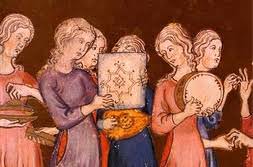The Return of the Guilds, Utrecht, Utrecht University, 5-7 October (2006)
Abstract
According to their self-representations, Western European guilds in the early modern period (1500-1800) were archetypal patriarchal institutions. In cities and towns where they existed, the vast majority of guilds restricted their membership to men. Corporate statutes not only prohibited women from becoming mistresses, they also prevented them from entering apprenticeship or even accepting paid employment with masters. Widows could inherit privileges from their husbands but always with significant limitations. These restrictions derived from an idealized vision of the preindustrial family economy in which the master was a male family head, who simultaneously directed the labor of his wives, children, journeymen and apprentices. Guild statues thus awarded masters the same authority over their journeymen and apprentices as over their own family members. Although guilds were profoundly local institutions, whose statutes varied considerably from city to city, the overwhelmingly male composition of the guild system, and its patriarchical vision of the social order, were common threads across Western Europe.
Drawing on guilds’ own vision of the world, historians of labor organization have viewed the corporate system as a male terrain in which women played little role. Classic studies of the guilds by historians such as Emile Levasseur and Emile Coornaert – which rely heavily on statutes for source material – barely mentioned women, except with regard to their statutory rights as widows, wives, and daughters of masters. As Maurice Garden summed up the classic historiography on French guilds in a 1986 article: “The hierarchy of work was a hierarchy inherited from the basic stages of life: apprentice, compagnon, master. It was also a largely masculine organization: women’s work was considered inferior or even outside the corporate order.”
Women, Gender and Guilds in Early Modern Europe
Clare Haru Crowston
The Return of the Guilds, Utrecht, Utrecht University, 5-7 October (2006)
Abstract
According to their self-representations, Western European guilds in the early modern period (1500-1800) were archetypal patriarchal institutions. In cities and towns where they existed, the vast majority of guilds restricted their membership to men. Corporate statutes not only prohibited women from becoming mistresses, they also prevented them from entering apprenticeship or even accepting paid employment with masters. Widows could inherit privileges from their husbands but always with significant limitations. These restrictions derived from an idealized vision of the preindustrial family economy in which the master was a male family head, who simultaneously directed the labor of his wives, children, journeymen and apprentices. Guild statues thus awarded masters the same authority over their journeymen and apprentices as over their own family members. Although guilds were profoundly local institutions, whose statutes varied considerably from city to city, the overwhelmingly male composition of the guild system, and its patriarchical vision of the social order, were common threads across Western Europe.
Drawing on guilds’ own vision of the world, historians of labor organization have viewed the corporate system as a male terrain in which women played little role. Classic studies of the guilds by historians such as Emile Levasseur and Emile Coornaert – which rely heavily on statutes for source material – barely mentioned women, except with regard to their statutory rights as widows, wives, and daughters of masters. As Maurice Garden summed up the classic historiography on French guilds in a 1986 article: “The hierarchy of work was a hierarchy inherited from the basic stages of life: apprentice, compagnon, master. It was also a largely masculine organization: women’s work was considered inferior or even outside the corporate order.”
Click here to read this article from Utrecht University
Subscribe to Medievalverse
Related Posts